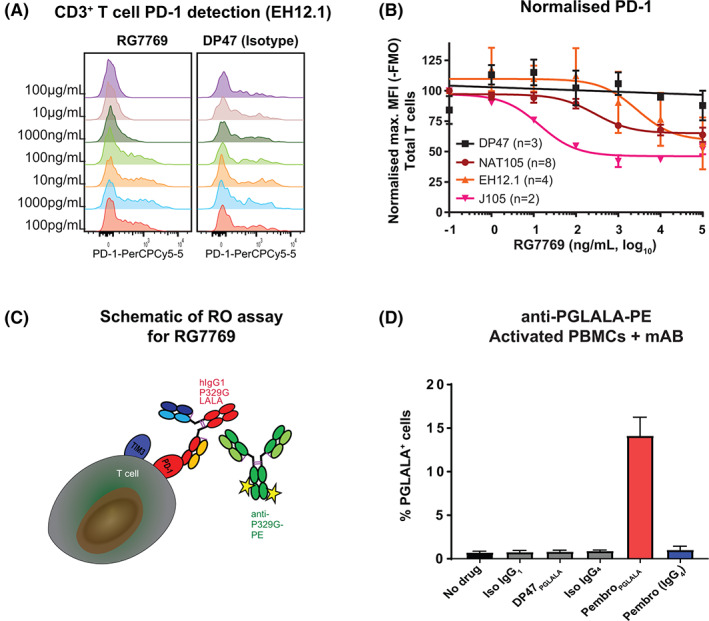FIGURE 1.

Development of total‐drug‐bound receptor occupancy (RO) assay to detect RG7769 on peripheral blood derived immune cells. (A) CD3‐CD28 activated peripheral blood mononuclear cells (PBMCs) were incubated with increasing concentrations of RG7769 (100 pg/ml➔100 μg/ml). PD‐1 expression on CD3+ T cells was analyzed using anti‐PD‐1, clone EH12.1, by flow cytometry in a representative donor. (B) Pooled normalized relative CD3+ T cell PD‐1 expression from two independent experiments assessing anti‐PD‐1 clones EH12.1, NAT105 and J105. (C) Schematic depicting RG7769 engaging T cells via high‐affinity anti‐PD‐1 and low‐affinity anti‐TIM3 binding on target cells. RG7769 Fc harbors the P329 IgG1 mutation (“PGLALA”) which can be specifically detected via anti‐PGLALA‐PE (M‐1.7.24). (D) PBMCs from n = 3 different donors incubated with pembrolizumab (IgG4 or PGLALA), rituximab (IgG1) or respective isotype controls (Iso IgG1, Iso IgG4, DP47‐PGLALA), and detected via anti‐PGLALA‐PE. Pembrolizumab staining is shown for CD3+ T cells [Color figure can be viewed at wileyonlinelibrary.com]
